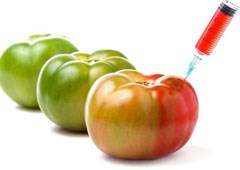Recently I was doing some net surfing to pass the time, and ended up visiting a number of sites related to the hobby of keeping pigeons.
While city dwellers may look at the common pigeon as little more than flying rats, pigeon hobbyists raise a rather diverse range of breeds with huge diversity in the look of the birds, and what purpose they were originally bred for.
As an example the homing pigeon, derived from the wild rock pigeon as almost all pigeon breeds are, has been selectively bred for its ability to find its way home over extremely long distances.
The sport of flying homing pigeons was well-established as early as 3000 years ago, and since then the bird has been used as a messenger during wars, and as a postal carrier.
Its usefulness is the result of selective breeding for centuries.
But the homing pigeon looks very little like its cousins the pouter breeds of pigeons, or the fantails and they fly nothing like the acrobatic tumblers.
It was in the midst of my online delve into pigeons it struck me how genetically modified the pigeon is. Hobbyists through hundreds and hundreds of years have selected breeding stock based on natural mutations, particular looks and colour patterns, and have bred for those things, diverging pigeons in dozens of distinct breeds, many appearing little like their cousins.
This is not a new thing.
Farmers have changed the cow over the centuries too. The dairy breeds such as Holsteins are a considerably different annual than a common beef breed such as the Hereford. Herefords are quite different from the diminutive Dexter.
And then there are double muscled breeds such as Belgian Blues which are quite different even among beef breeds.
The double muscled breeds are interesting in that a picture of a deeply muscled bull of one of the breeds occasionally gets posted to social media with a resulting outcry from some about it 小蓝视频 GMO. The connotation of course 小蓝视频 that GMO is bad.
There are certainly concerns in the public about GMO today, relating to the science of taking a trait from one species and implanting it in another.
But in reality we have been genetically modifying species for centuries. Farmers have played their role, as in the example of the cattle above, and in crops such as triticale or tayberries.
Triticale is a hybrid of wheat and rye first bred in laboratories during the late 19th century in Scotland and Germany, while the Tayberry is a cross between a blackberry and a red raspberry created in 1979.
However, the modification of species over the years by selective breeding by, and for farmers, pales rather quickly in comparison to that of hobbyists.
But more of that is what has turned out to be a two-part review of my thoughts.
Calvin Daniels is Editor with Yorkton This Week.




